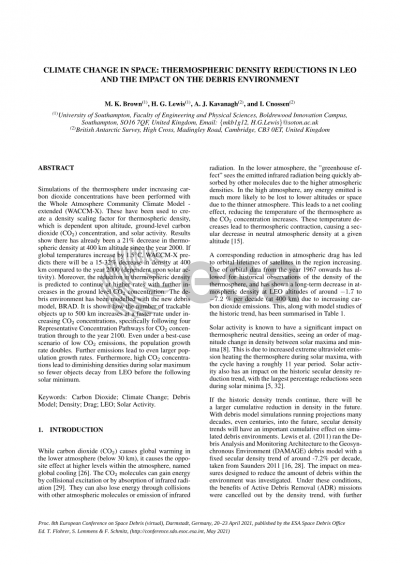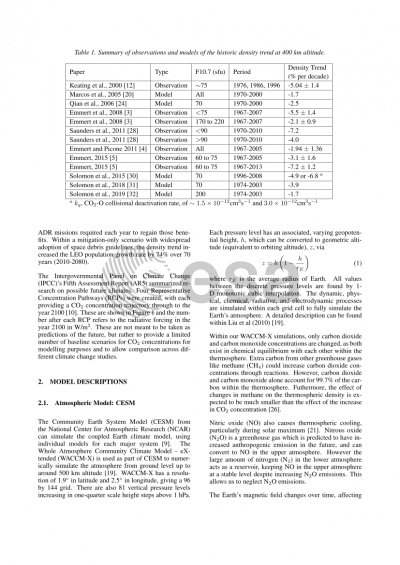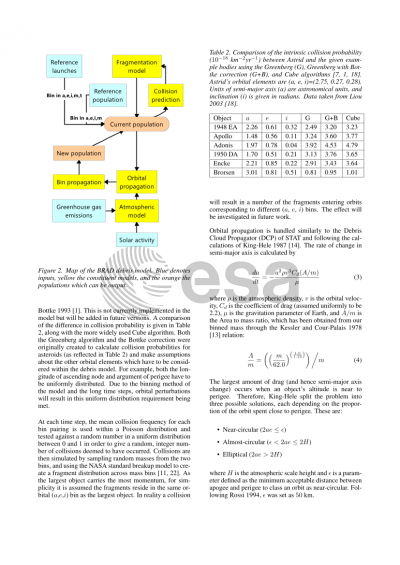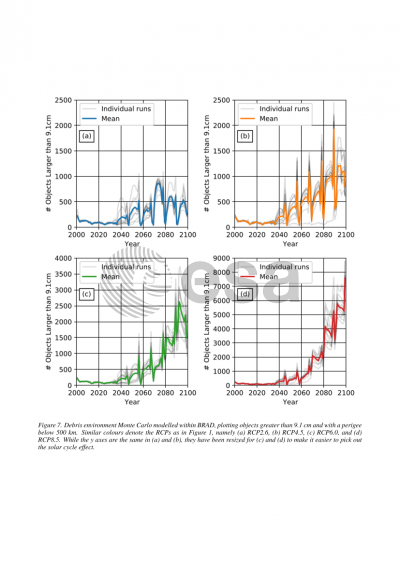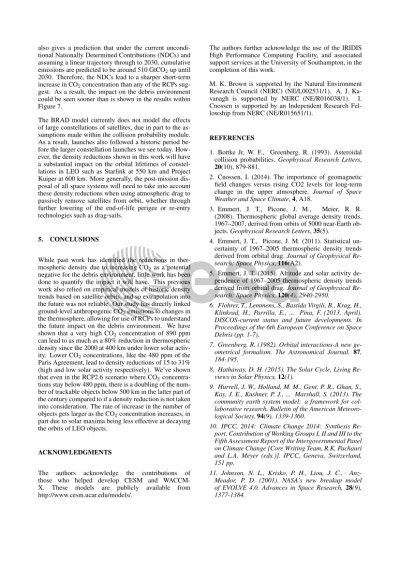Document details

Abstract
Orbital data from the year 1967 onwards has allowed for historical observations of the thermosphere, and has shown a long-term decrease in atmospheric density at LEO altitudes of around -1.7 to -5 % per decade (at 400 km) due to increasing carbon dioxide emissions. A corresponding reduction in atmospheric drag has led to orbital lifetimes of satellites in the region increasing compared to equivalent satellites launched two or more decades ago. With carbon dioxide emissions continuing to rise, we aimed to understand what impact there would be on future thermospheric densities and the debris environment.
Simulations of the thermosphere under increasing carbon dioxide concentrations have been performed with Whole Atmosphere Community Climate extended (WACCM-X) as part of the Community Earth System Model (CESM). These have been used to create a density scaling factor for thermospheric density, which is dependent upon altitude, ground level CO2 concentration, and solar activity.
The model shows there has already been a 17% decrease in thermospheric density at 400 km altitude since the year 2000. If global temperatures increase by 1.5°C, WACCM-X predicts there will be a 13-30% decrease in density at 400 km compared to the year 2000. Moreover, the reduction in thermospheric density is predicted to continue at higher rates with further increases in the ground level CO2 concentration. At the largest modelled CO2 concentration of 894 ppm, equivalent to the year 2095 in a worst case scenario, WACCM-X shows a reduction in density of 79% at 400 km.
The density scaling factor has been applied to the empirical atmospheric model NRLMSISE-00. This has allowed for investigation of the impact on the debris environment, with particular focus on large constellations deployed to altitudes below 650 km which rely on atmospheric drag to passively remove any failed satellites from orbit within less than 10 years. It is shown that, due to the decreasing density, there will be a substantial increase in orbital lifetimes for these satellites, with the potential to exceed the “so-called” 25-year rule. This result changes expectations for the collision hazard associated with large constellations deployed below 650 km and, therefore, has implications for the future regulation of such systems.
Preview
